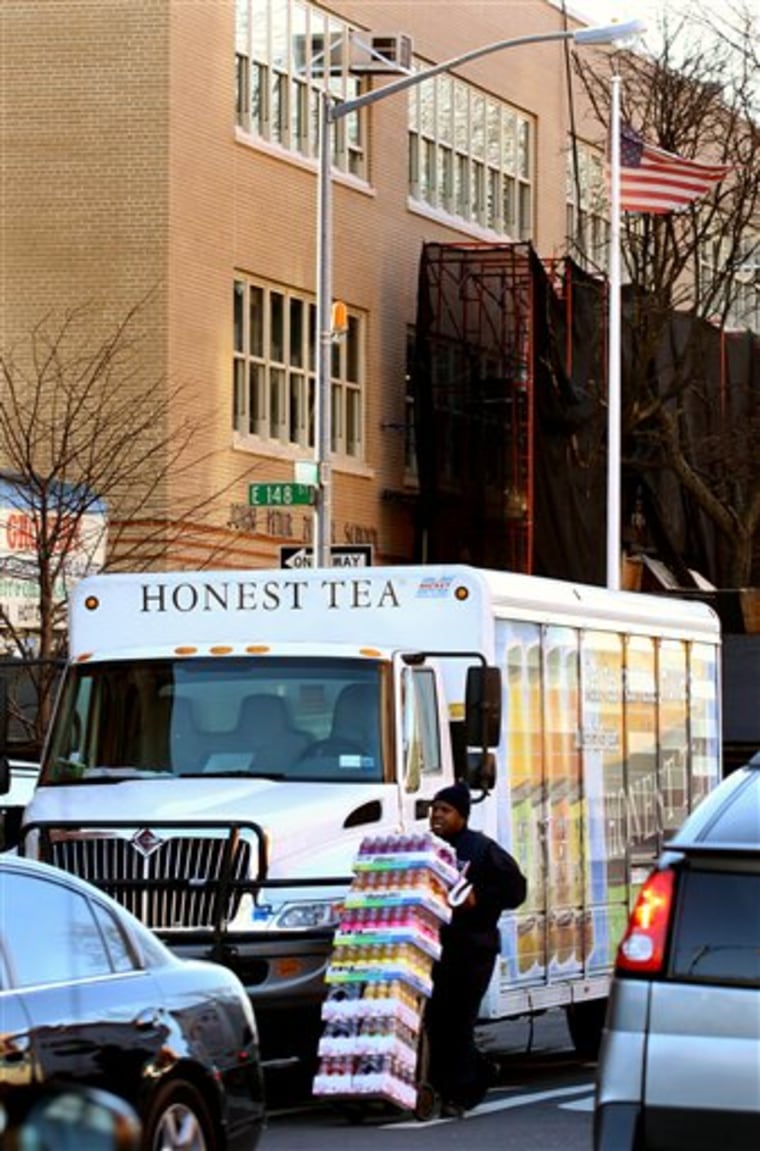The fumes from idling taxicabs and delivery trucks can be so bad outside city schools that teachers race to close their classroom windows at certain times of the day to protect their students.
A new law seeks to cut that pollution by giving vehicles just 60 seconds to idle in a school zone.
The measure signed into law this month cuts the allowed idling time from three minutes to one minute around schools, and gives more city agencies the power to issue violations. It also requires an annual violations report so officials can track enforcement.
Councilman John Liu, lead sponsor of the bill, said the law was not only intended to reduce pollution in school areas — helping the city's high child asthma rates — but was also meant to improve public awareness about idling throughout New York City.
There is no federal anti-idling law, but about 30 states and dozens of municipalities have their own measures, typically limiting time to around three to five minutes. New York City's three-minute law has been in place citywide since 1971, but advocates say it is rarely enforced or advertised.
Fines range from $220 to $2,000 for repeat offenders. A city official testified in 2003 that just 325 idling violations had been issued the previous year. In 2007, there were just 526, and all but 10 of those were for diesel-fueled vehicles, meaning that there is very little enforcement of passenger car idling.
Ad campaign planned
Mayor Michael Bloomberg's office is planning a public awareness campaign about idling later this year, with advertisements for radio, bus stops and billboards. The city says the goal is to target drivers and remind them about the laws.
Officials are also planning to microtarget enforcement by using data from the city's 311 hot line, where citizens can call to make an idling complaint. Over the past two years, the hot line has received 4,600 such complaints.
A new report by the Environmental Defense Fund estimates that idling cars and trucks produce 130,000 tons of heat-trapping carbon dioxide each year in New York City. The group believes the one-minute idling limit next to schools is the toughest such law in the United States.
The report also calculates that idling vehicles in the city produce 940 tons of smog-forming nitrogen oxides, 24 tons of soot particles and 6,400 tons of carbon monoxide each year. Those are pollutants associated with a number of health risks, including asthma.
In New York City, the child asthma rate is particularly bad. According to the health department, asthma is the most common cause of hospitalization for children 14 years and younger, and is a leading cause of missed school days in the nation's largest school district of 1.1 million pupils.
"In an urban canyon, there's no place for the fumes to go except into the windows of our school buildings," said Rebecca Kalin, director of Asthma Free School Zone.
Crack down on school buses
School buses had long been singled out as major contributors to asthma-aggravating pollution throughout the city. In 2003, the New York State Attorney General's office found that many school buses were idling for 20 minutes, despite the three-minute law.
The following year, the attorney general sued several bus companies for breaking the law, and in 2007, the state law was strengthened even further to crack down on buses.
Advocates say school bus idling is slowly improving. Parents are also getting better about idling when shuttling their children to and from school.
Now, Kalin said, the main problems are vehicles that have nothing to do with the school but are simply idling nearby, like delivery trucks and general street traffic.
The school zone created by the law encompasses all streets that immediately border public and private schools.
The new law is a welcome reprieve for parents, children and teachers at P.S. 18 in the Bronx, which is located on a main thoroughfare, near a major expressway and across from a hospital. Cabs are known to idle outside the hospital all day while delivery trucks make stops at nearby stores.
"They just sit there and park, with the vehicle still on," said Carmen Nieves, parent coordinator for the school. "The idea of one minute — it's fabulous. It will be great if it works."
